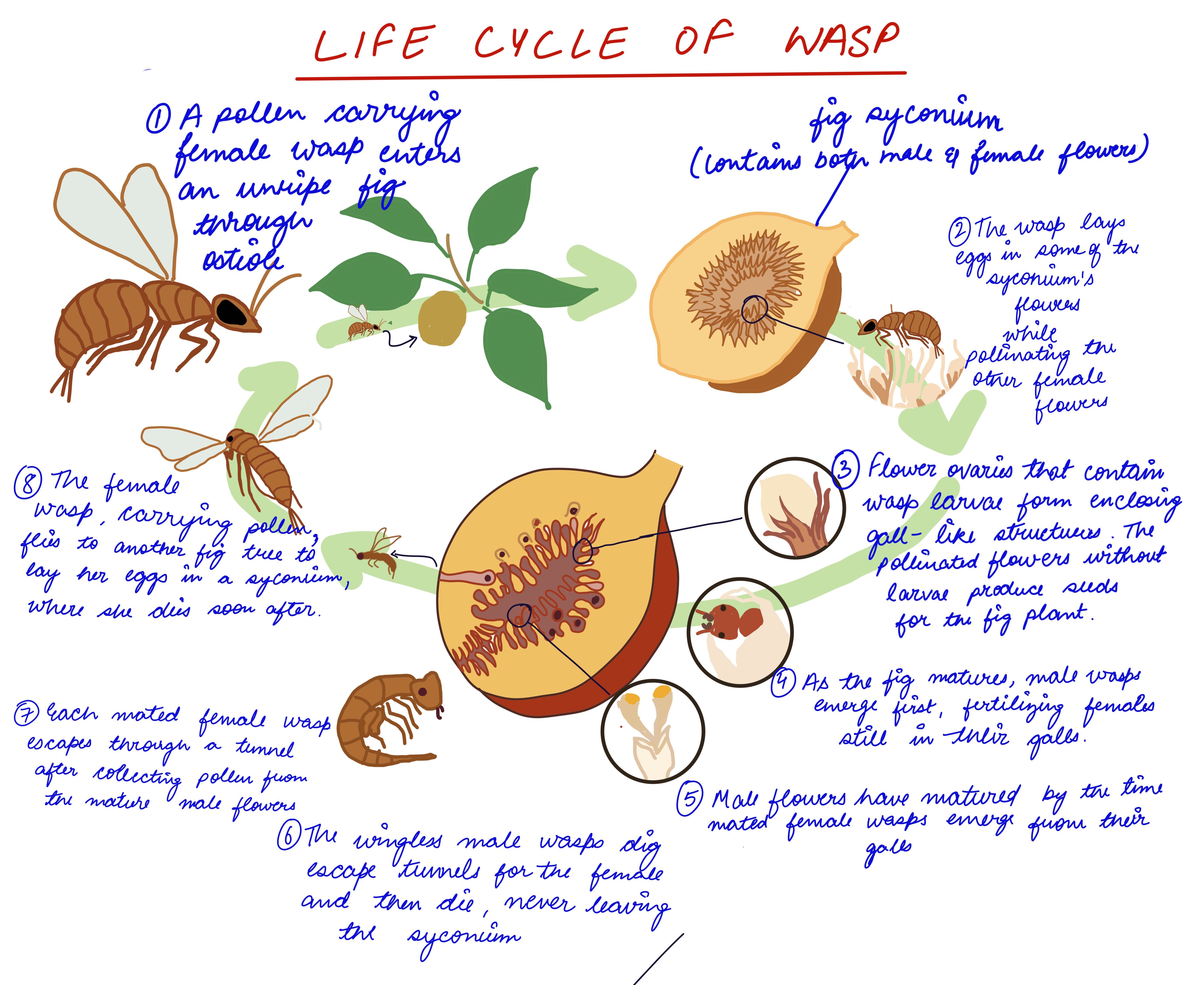Fig-Wasp Mutualism: Figs and fig wasps share an obligate mutualistic relationship, meaning they are entirely dependent on each other for survival and reproduction. Fig wasps are the only insects that can pollinate fig trees, and fig trees are the sole source of food and shelter for developing fig wasps.
Highly Specialized Pollination: The fig fruit (technically a syconium) has its flowers enclosed within. Female fig wasps enter the syconium through a tiny opening called the ostiole. They lay eggs inside and pollinate the flowers in the process.
Coevolution: This intricate relationship is a classic example of coevolution, where two species have evolved together over millions of years, with each species' adaptations influencing the other's.
The other options are incorrect:
-
Mahua (B): It is pollinated by various insects and even bats. Mahua (Madhuca indica) is found in the dry deciduous type of forests like the Forests of Chhattisgarh and Jharkhand.
-
Sandalwood (C): It is primarily pollinated by bees and flies. Sandalwood is a dry deciduous forest species native to China, India, Indonesia, Australia, and the Philippines. Sandalwood is listed as Vulnerable in the IUCN Red list. Sandalwood grows as a partial or hemiparasite, relying on the presence of four or five other trees nearby. Beneath the ground, its roots develop a haustorium, an octopus-like structure that attaches to the host tree's roots, drawing water and nutrients from them.
-
Silk cotton (D): It is pollinated by bats and birds. The Silk Cotton Tree is a tropical deciduous tree native to the Indian subcontinent and other parts of Southeast Asia. It produces a capsule that, when ripe, contains white fibres like cotton.


